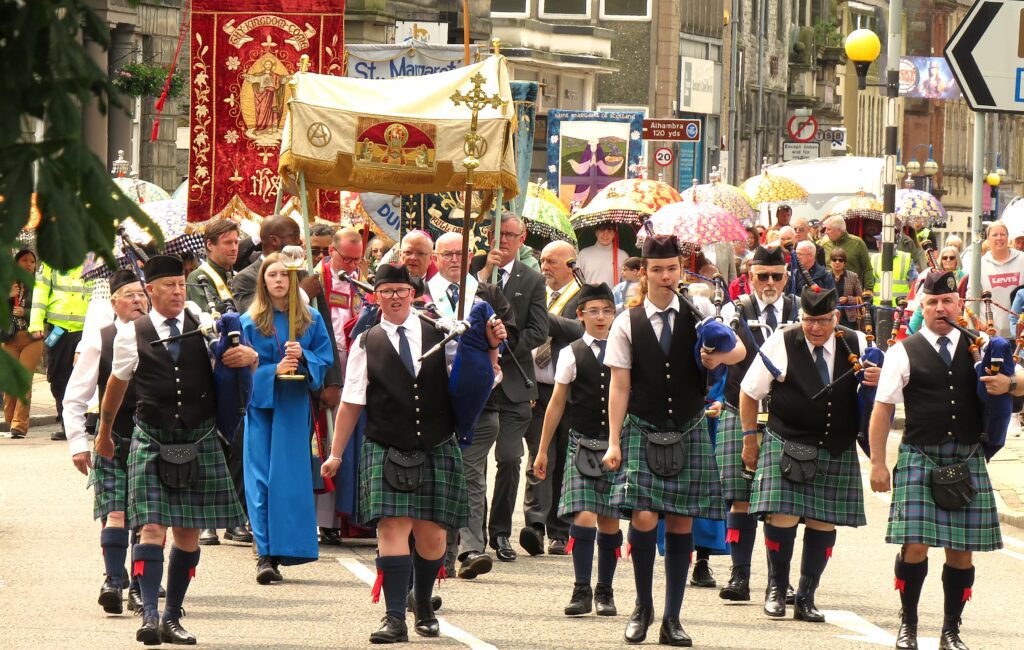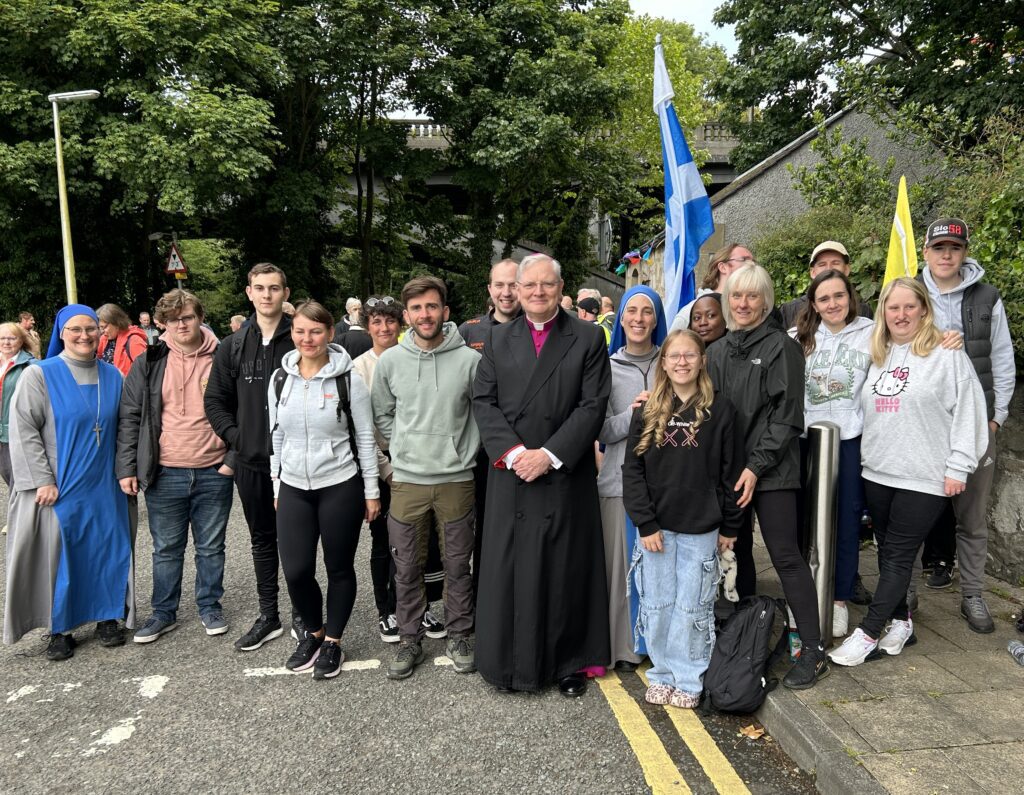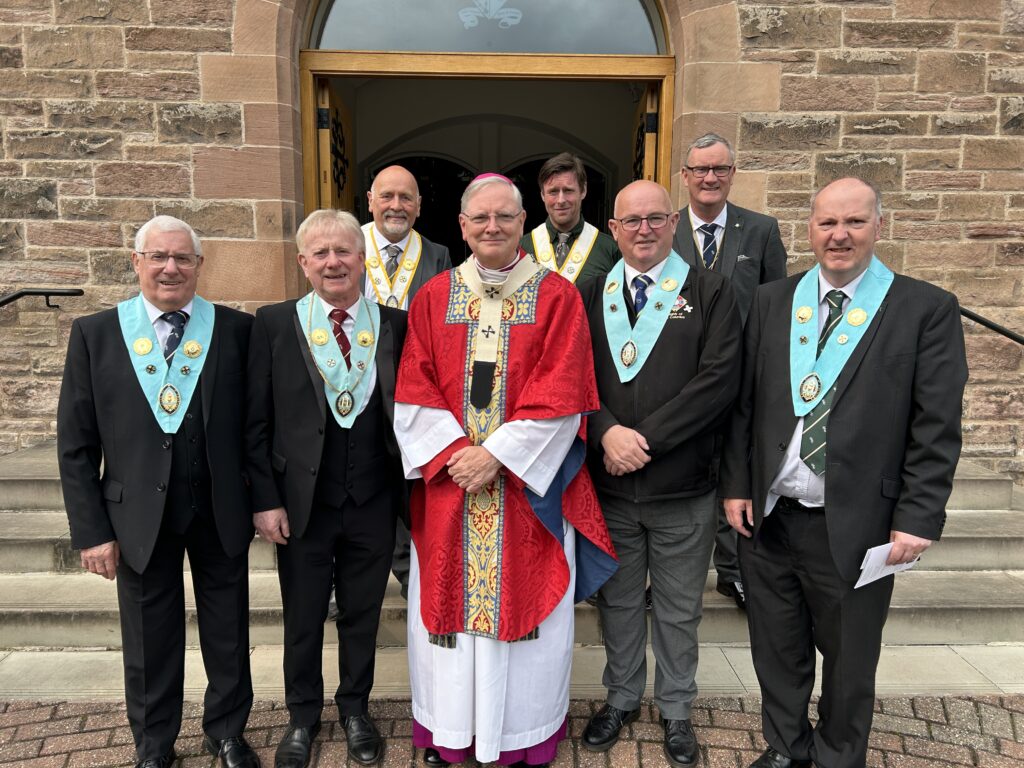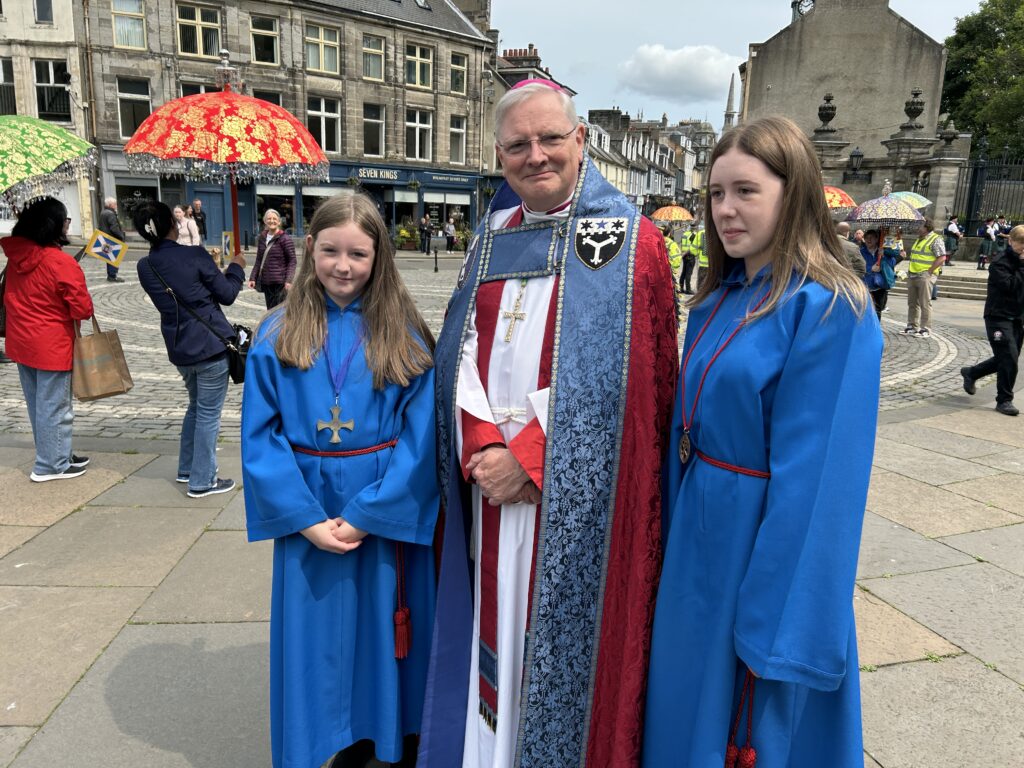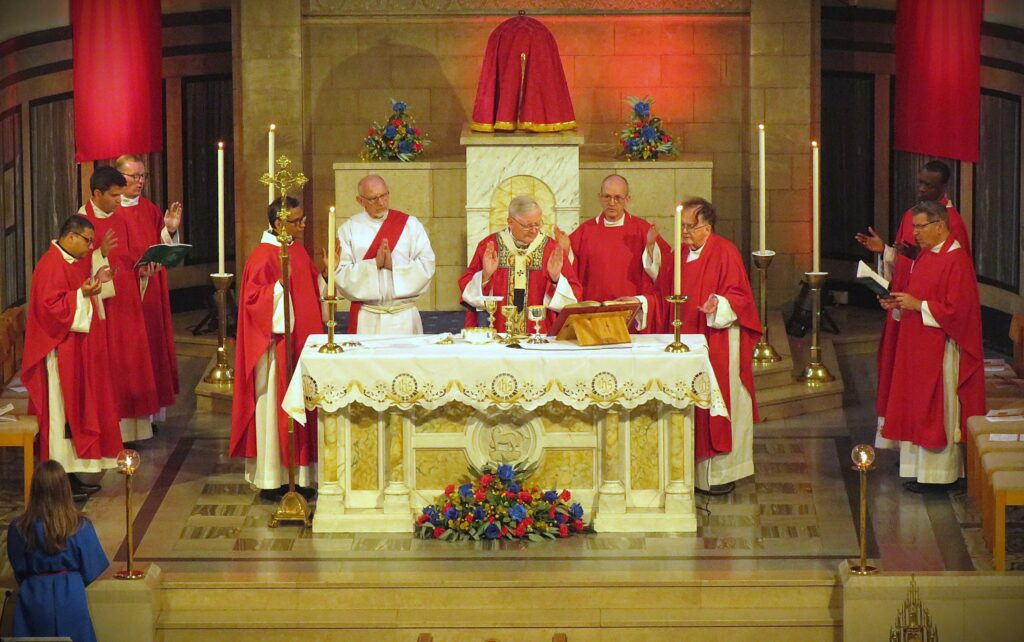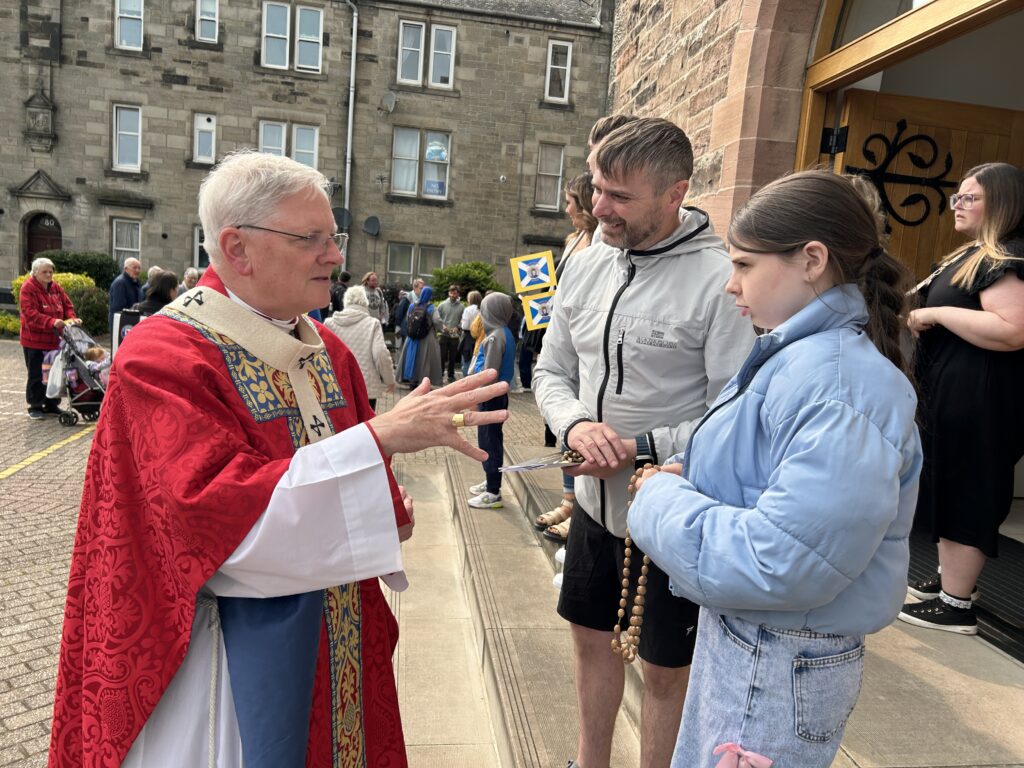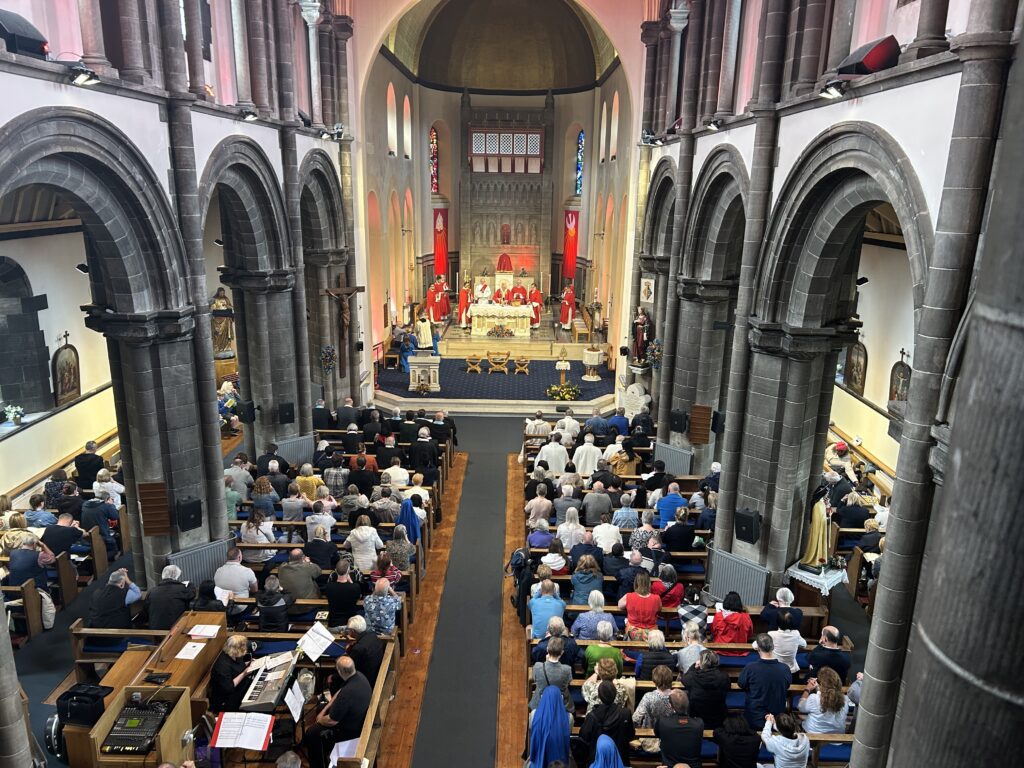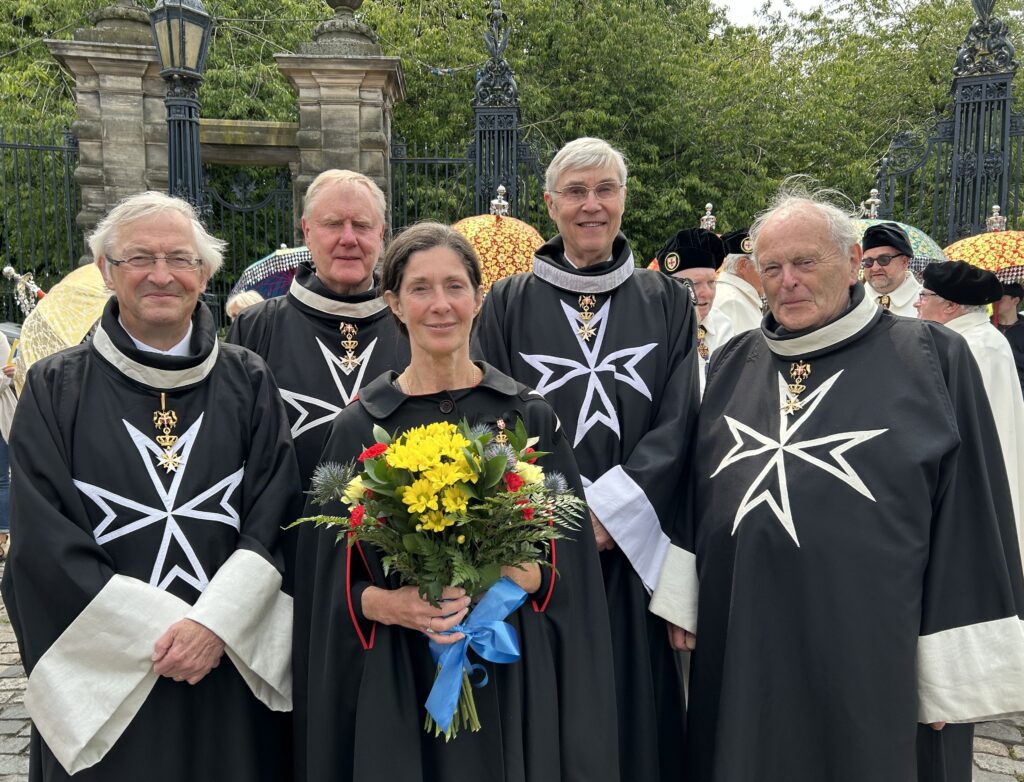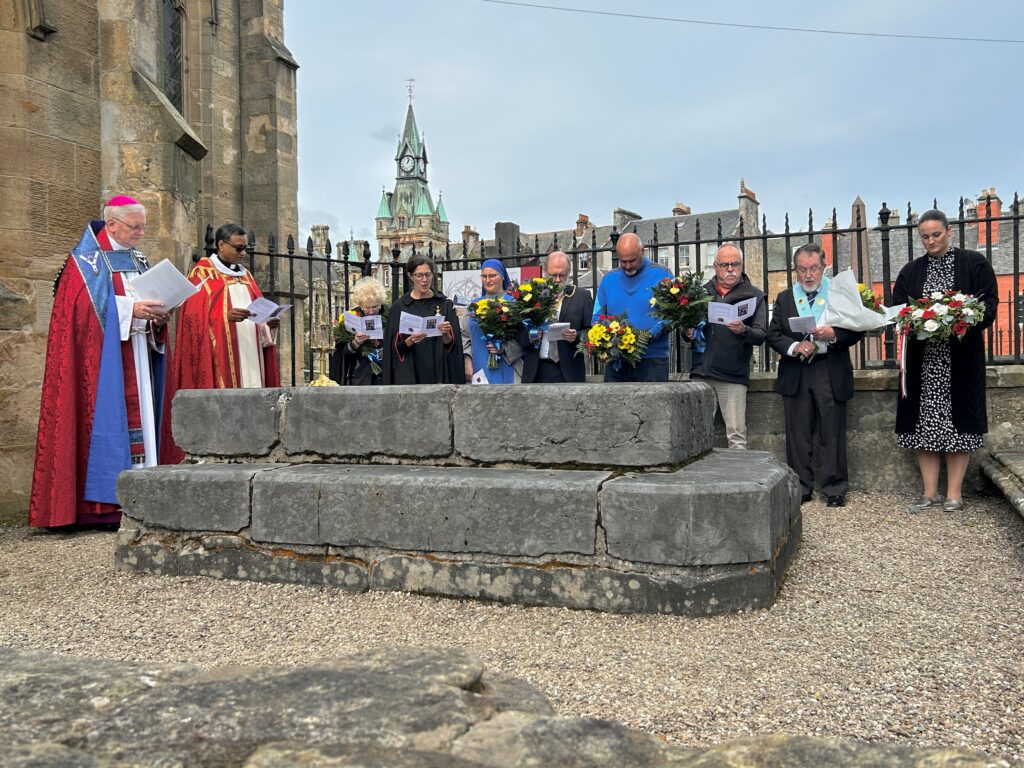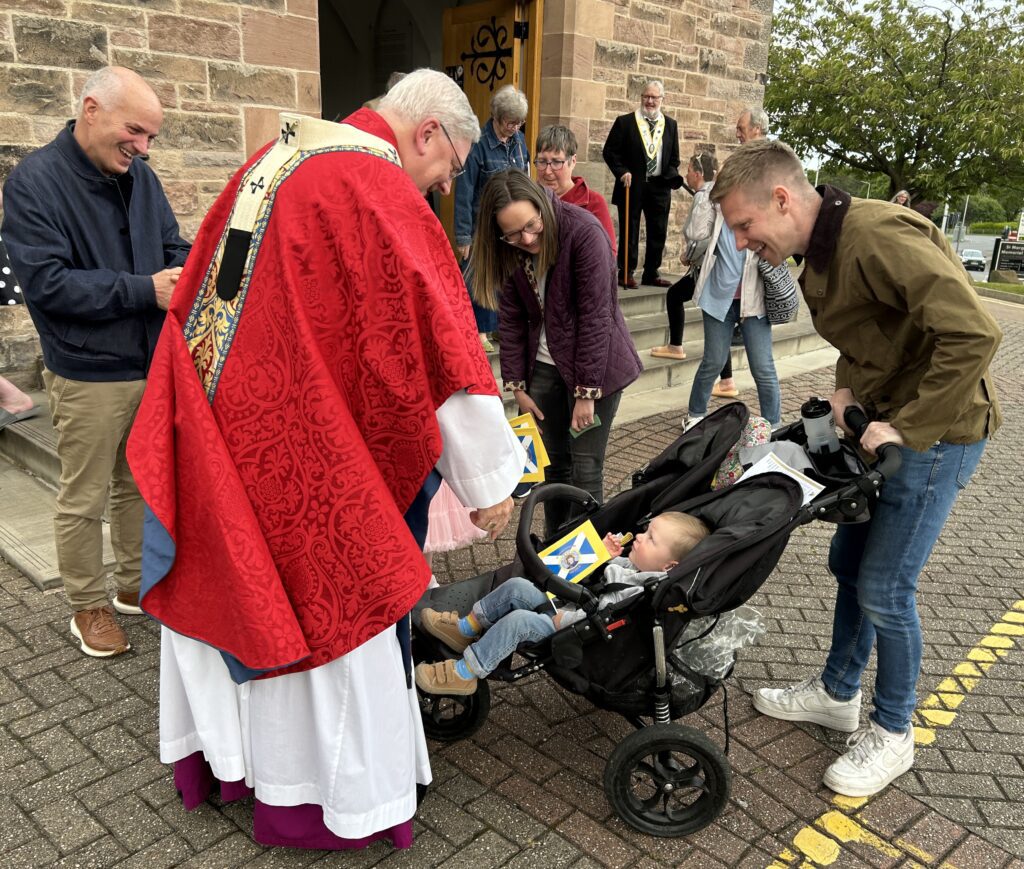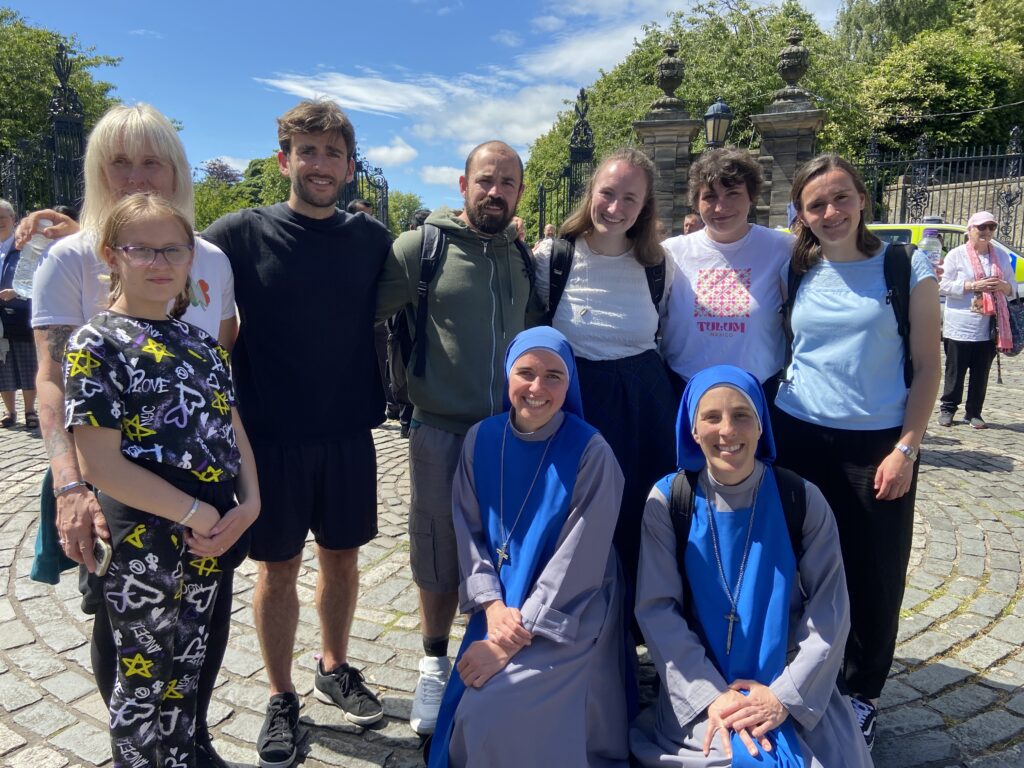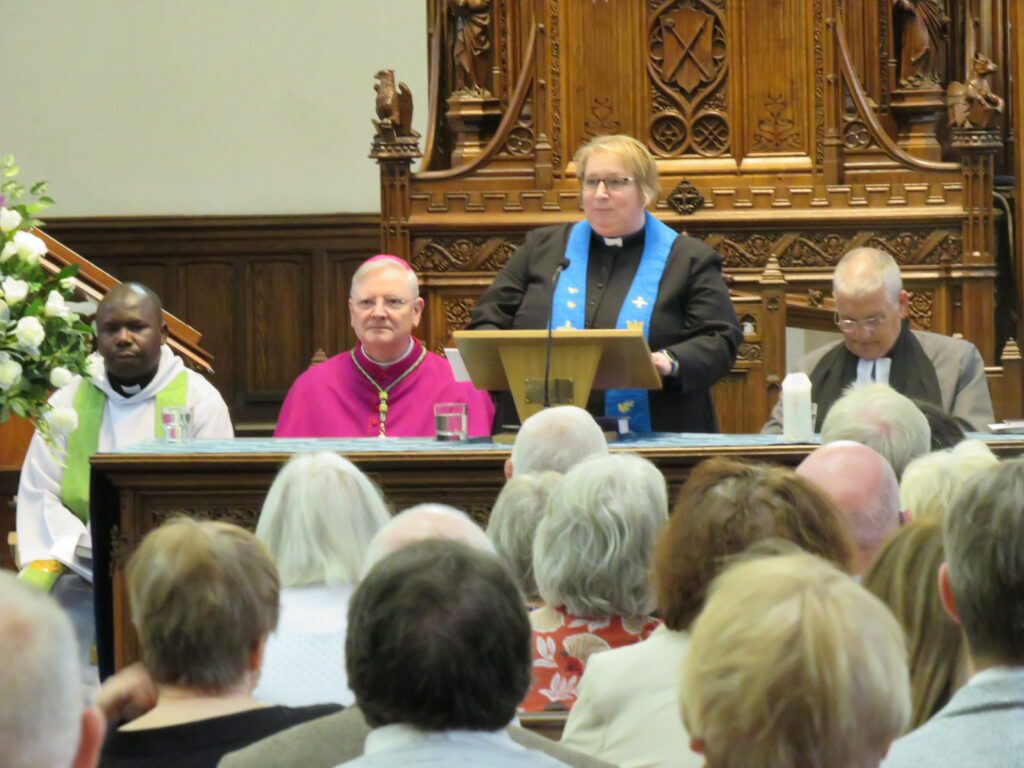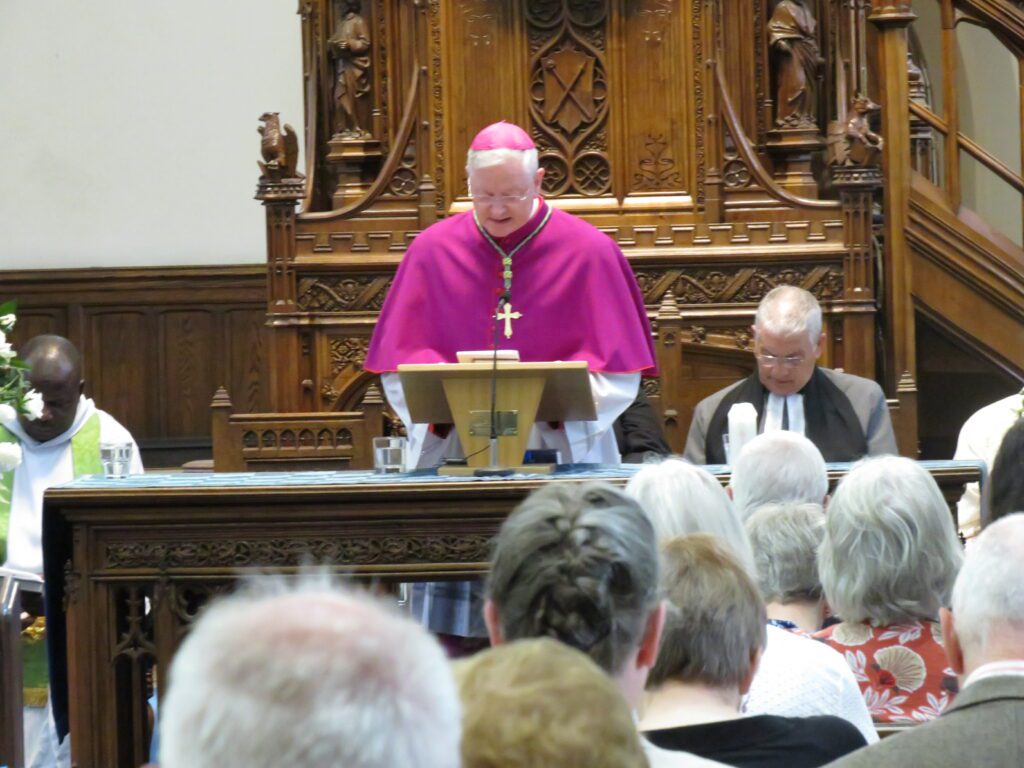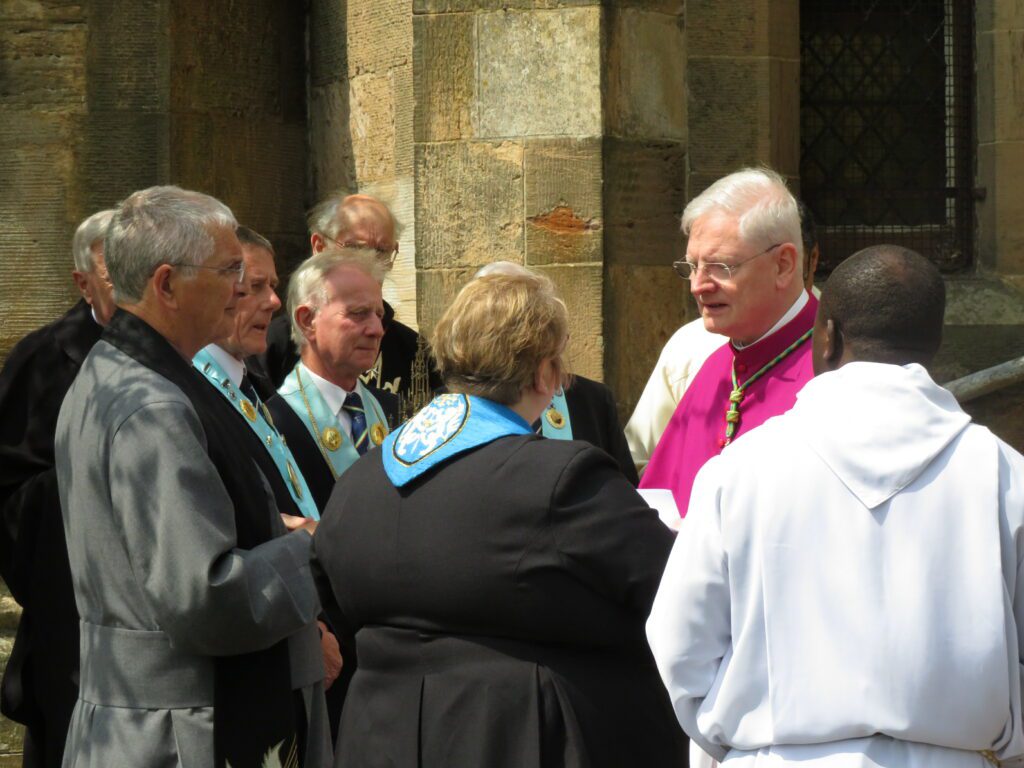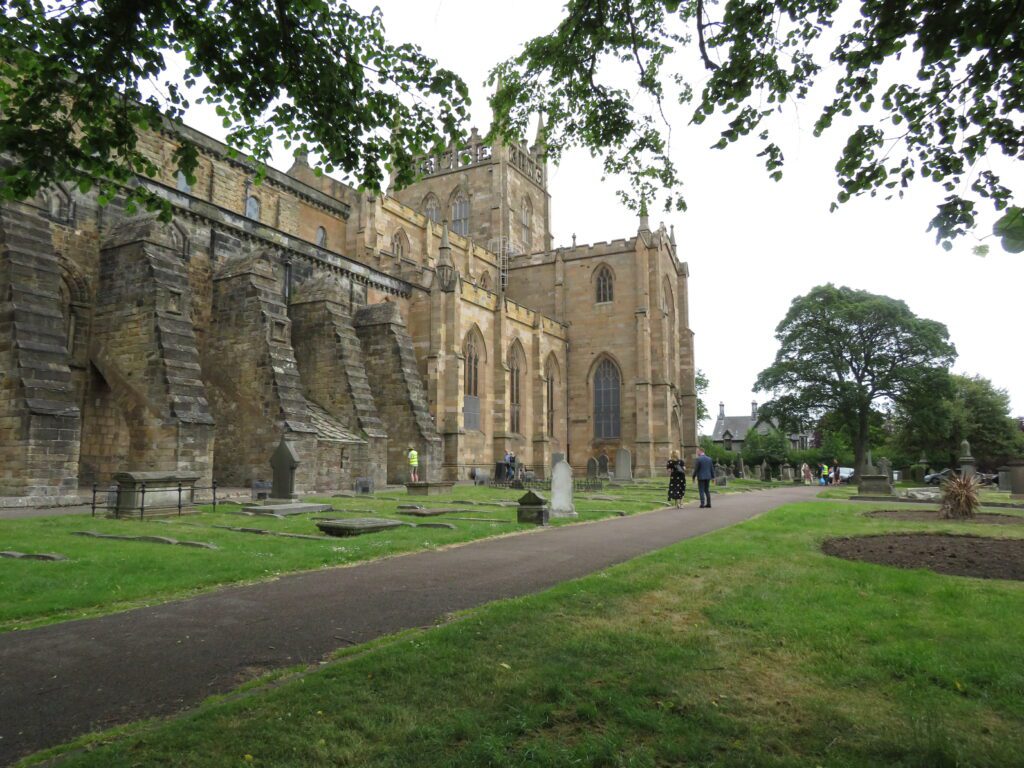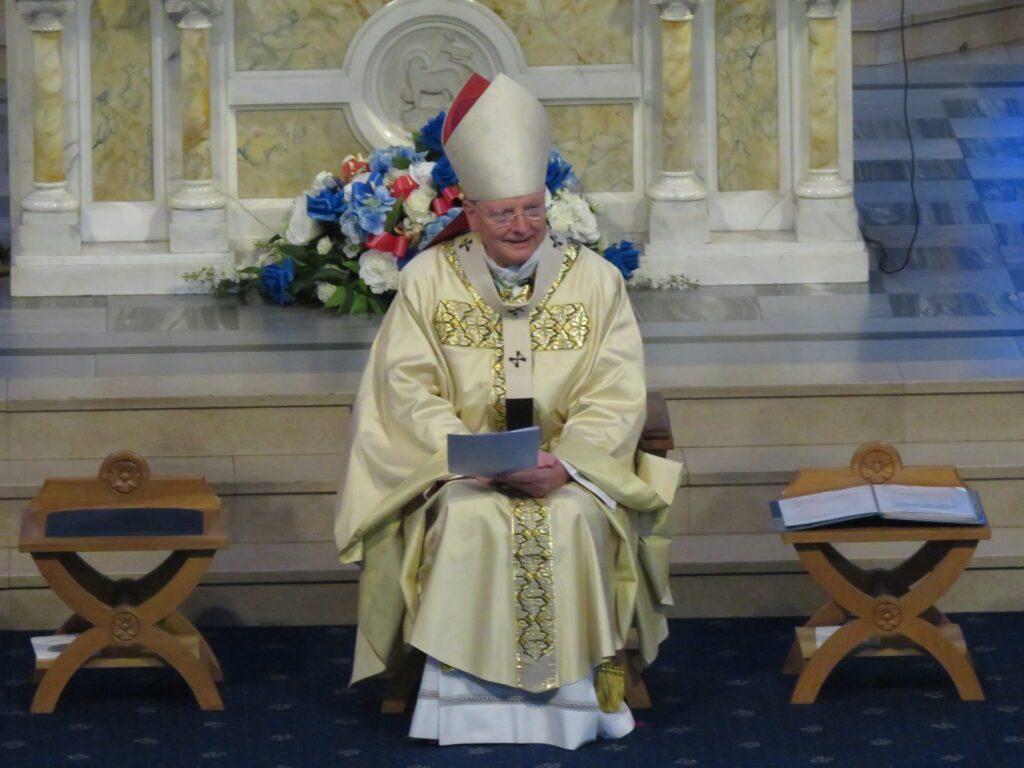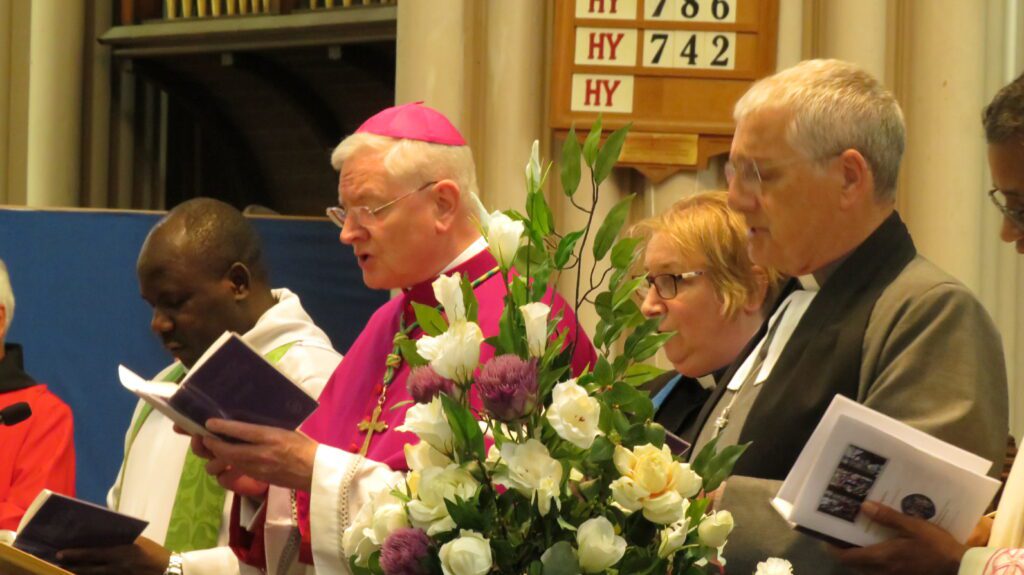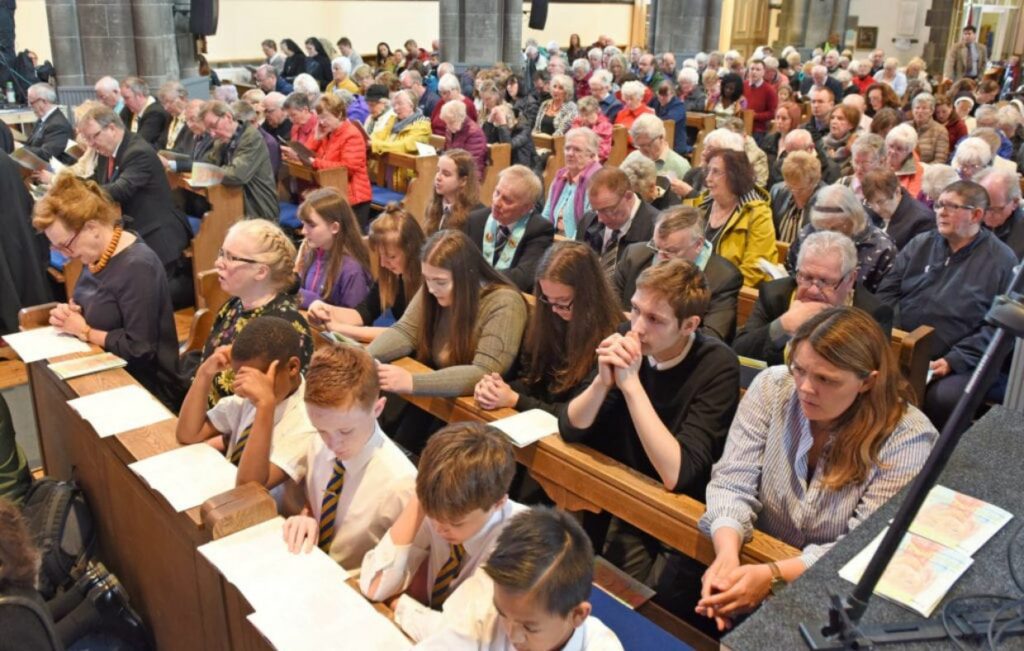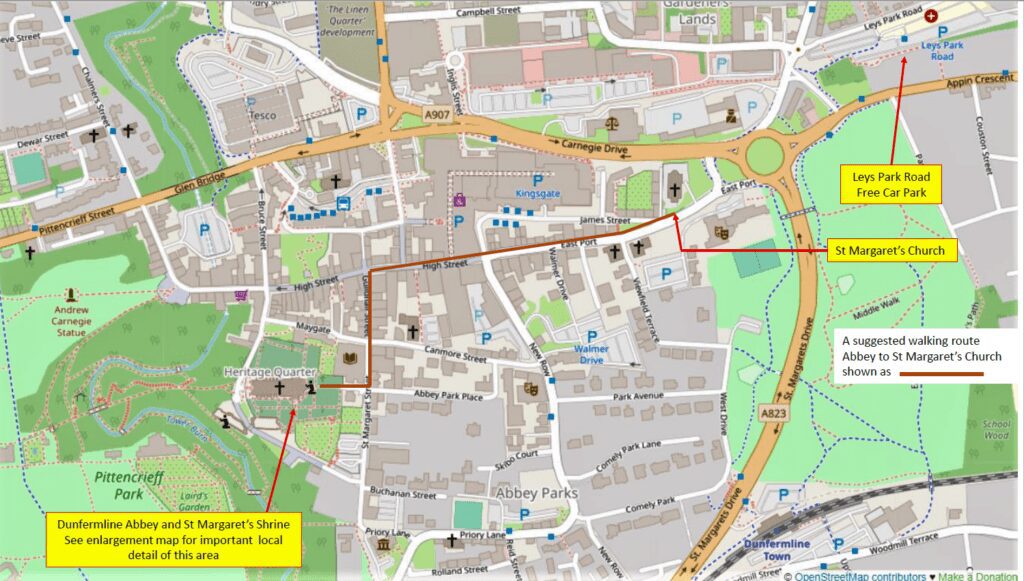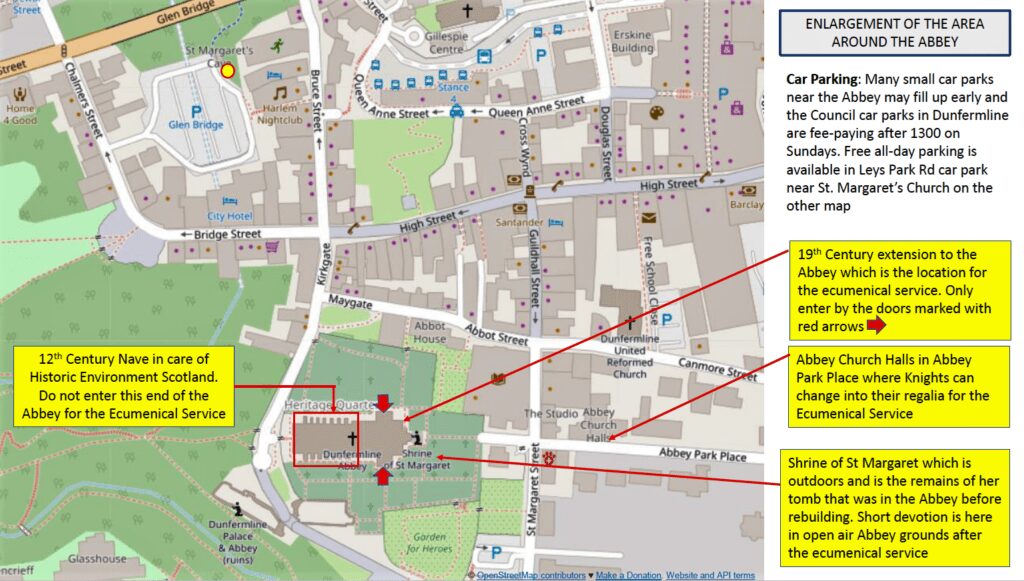Here is the homily of Archbishop Leo Cushley, delivered at a service in Dunfermline Abbey, to mark the official signing of the St Margaret Decalaration of Friendship between the Church of Scotland and the Catholic Church in Scotland.
***
My dear brothers and sisters in Christ,
First of all, let me thank the Reverend MaryAnn Rennie for her gracious invitation to address a few words to you on this happy occasion.
Today, we gather in the City of Dunfermline, first and foremost to remember St Margaret on her feast day. In her, we honour a woman who is fairly well known to us thanks to her biographer, who was also her confessor.
Unlike, say Columba or Cuthbert, she doesn’t have the aura of a distant Celtic myth about her. The picture we have of her is very real, somehow much more up to date.
We know just what she was like so, even at this distance, we can honour her goodness, her strength of character, her patience, her mercy, her determination, her sense of justice, her holiness.
And we come here today to learn from her, for our own sake, and for that of our Church and of our nation. We hold her memory dear, and we pledge ourselves to work as she did for the peace and prosperity of our land.
Although she lived 950 years ago, Margaret’s positive and life-giving impact upon our country’s political, social and spiritual life can still be felt, to this day.
Power of goodness
This immediately teaches us several things: that the power of goodness and holiness must never be underestimated; that leadership is a call to service of others, not of self; that love and mercy really do last forever; and that one good person can make a difference.
The selfless, benign, beautiful example of St Margaret and her continuing influence upon us is a simple proof of all those things.
We continue to underestimate the power of goodness; we think it often looks weak and disarmed; but simple goodness can change people’s hearts, even if it’s something that is sometimes hidden from sight. Goodness is its own reward, although it may not be a reward that is immediately seen or felt.
We casually lament the quality of leadership in our days. Compared to other times and places, though, there are many fine people who enter public life for the right reasons, and who genuinely succeed in serving their fellow citizens; but, too often, good ideals are made to give way to the democratic imperative to get elected first, and then compromises take the place of what is truly right and just and good.
Occasionally, however, one person makes a difference, one person in the right place and time changes the game. Queen Margaret was such a person.
Providence sent her to Scotland and a transformation of our land started under her good and gentle guidance. So, we honour her goodness, her strength of character, her patience, her mercy, her determination, her sense of justice, her holiness.
We honour her by imitating those virtues, and by praying the good Lord for a double share of her spirit for ourselves and for our whole land.
One of the things she and her sons set out to do was to connect, or to reconnect, old Christian Scotland with the rest of the continent, to drag it, as it were, into the 11th century. Poland had converted to Christianity in 966; Kievan Rus had done so in 988; St Stephen, the king of Hungary and St Margaret’s grandfather, had converted to Christianity in 1000 AD; and by 1070, the date we are remembering today, a great movement of social and religious reform was under way throughout Europe.
Embracing the faith
So, as Margaret grew up in the Hungarian court, she was influenced by the joy and enthusiasm of people newly embracing the faith. But she was also an English Saxon Princess, and her father’s side came from people who had been Christian for centuries.
Most date the beginnings of Saxon Christianity to the arrival of St Augustine at Canterbury in 597. Augustine had been sent from Italy to England by Pope Gregory the Great, and although Christianity was already thriving in Britain and Ireland, it was solidly reinforced by Augustine’s arrival.
Those of us who learn of these things will acknowledge that there is a lot more to the story than that, but that’s enough for now: I give you this simple version of the event, in order to imagine What if… What if Margaret wished to bring the monks from Canterbury here for the same reasons?
She was a Saxon, so were they; they had strong links to the continental church, so did they; like Margret, they might have felt distinctly uncomfortable at the arrival of the Normans in Kent; and there may also have been ties of kinship and affection, now lost to us, that would have made the request to them - by this Anglo-Saxon princess, now the Queen of Scots – a more attractive prospect.
In any case, they accepted the invitation, and the rest, as they say, is history. The silken threads that bind us together were bound then too, and they were quietly reinforced by blood, and friendship, and faith.
These were living links between real people, and the border between the Scots and the English was, once again, overstepped and softened by genuine ties of faith and kinship and affection.
And if we think this is all ancient history and far from us today, we need only look to the presence of Her Royal Highness The Princess Royal here with us, or to the monks of Pluscarden Abbey near Elgin, alive and well today, who trace their ancestry to the monks of this very priory. In their different ways, they, like us, are a living link to the memory of what was founded here 950 years ago.
And as if that weren’t enough, we will shortly do something that will, I hope, help to build and consolidate those bonds I’ve just outlined.
The Church of Scotland and the Catholic Church in Scotland look to the pre-Reformation history of the Church here as a part of their shared heritage. This is something that they, along with the Scottish Episcopal Church, have long acknowledged, but they have never done so together, or in public.
Christian heritage
The international ecumenical movement, widely acknowledged to have begun in Edinburgh in 1910, took many decades to have its impact, and it was only in the 1980s that the churches in Scotland, heirs to the Christian heritage here, started to talk to each other more seriously, to pray and to act in common.
And they started – as everyone in the ecumenical movement did – by looking at what divides these ancient institutions, and in their initial enthusiasm tried to work towards an institutional union like that seen before the 16th century. And they found it difficult. Very difficult. And very tiring.
And yet, at the same time, others were starting to approach the matter from a different direction. In 2010, I sat in Westminster Abbey and listened to Pope Benedict say to the Archbishop of Canterbury, before an abbey full of Christian leaders from all over the UK, that we have more in common than that which divides us. This bears repeating: we have more in common than that which divides us.
It was a sentiment I hoped was true, and perhaps worth exploring. And I began to wonder, if it’s true – and it feels sort of true - what would it actually look like? What if, instead of chasing down all the differences that have accrued over nearly five centuries, we were to write down what we have in common instead?
How would it be if we were to start from what we both hold dear, what we both treasure in our common heritage, and write that down instead? It needn’t be an exhaustive list, it needn’t be complicated. The only thing then to be sought would be the political will to go and look. Anyway, I returned to my work abroad, and put these thoughts to one side.
But then in 2013 I was sent back to Scotland, and to Edinburgh. I returned as the Catholic Archbishop for this area, and I was invited to attend the General Assembly of the Church of Scotland. I’d never been before, and only knew vaguely what to expect. In terms of protocol and meetings and so on, it was fairly straightforward.
But something had changed while I had been away from Scotland (the previous twenty years), and the people attending the General Assembly let me see it.
The week before I was consecrated bishop, I was at St Andrews at a service and a minister walked up to me and said, “You’re the new archbishop, aren’t you?” She promptly gave me a big hug and then said, “I’m Lorna Hood, and I’m the Moderator of the General Assembly”. Something had definitely changed while I was away… And at the following General Assemblies, I was made to feel ever more welcome.
Agreement
So, these last forty years have been ones characterised by sincere theological dialogue, and we have arrived occasionally at agreement. We have also learned to pray together as brothers and sisters in Christ, especially in the Week of Prayer for Christian Unity every January.
And our people in their parishes now work together here and there in various charitable projects.
Above all, however, through our contacts over these last decades, something else has grown up, perhaps unnoticed: many on both sides have learned to become friends. And that, given our shared history, isn’t nothing.
We all know the history that we share. It contains much for us to regret, and it would be naïve to pretend it all away; but it’s a further reason to do something about it. Given our context, then, a friendship that is the unlooked-for consequence of the last 40 years is something to be noticed, to be welcomed, and to be built upon.
As I said at this year’s General Assembly, in the presence of my friend the Moderator Dr Iain Greenshields, here with us today, the Declaration is also a consciously new approach to ecumenism, an attempt to re-imagine the path towards Christian unity.
Instead of listing our problems and points of friction or grievance, old or new, the Declaration chooses to focus on what we have in common, and to underline that we treasure together, so much that is inspiring and ancient, profound and beautiful.
It suggests that we might one day reach effective unity by means of a growing affective unity. That’s just a clever way of saying greater unity achieved – at least in part - through greater friendship.
I would like to mention just some of the names of those involved in drawing up the Declaration, including Moderators Lord Jim Wallace and Iain Greenshields, Principal Clerks Drs George Whyte and Fiona Smith, ecumenical officer Dr Iain McPake, Convener of the Ecumenical Relations Committee Reverend Sandy Horsburgh, and several others who helped to shape the Declaration into its final form. It was a great pleasure to work with them to achieve today’s goal.
Of course, it’s not all over just yet: we will continue to discuss and deepen our understanding of important points of division over our heritage; but, meantime, more importantly, we believe, already, here and now, that where two or three of us are gathered together in the Lord’s name, He is there in our midst.
We are brothers and sisters in Christ. We stand shoulder to shoulder before an unbelieving world. And we wish to respect each other, to be a support to each other, and to do all we can, with patience and humility, to achieve the unity that the Lord prayed for.
And if St Margaret and the first men who came here nearly a thousand years ago were here with us now, I would like to think that they would welcome and approve of us setting out in this way, again, in friendship, to face the next thousand years, not as enemies or rivals, but as sisters and brothers - and friends in Jesus Christ.
Archbishop Leo Cushley, 16 November 2022.
